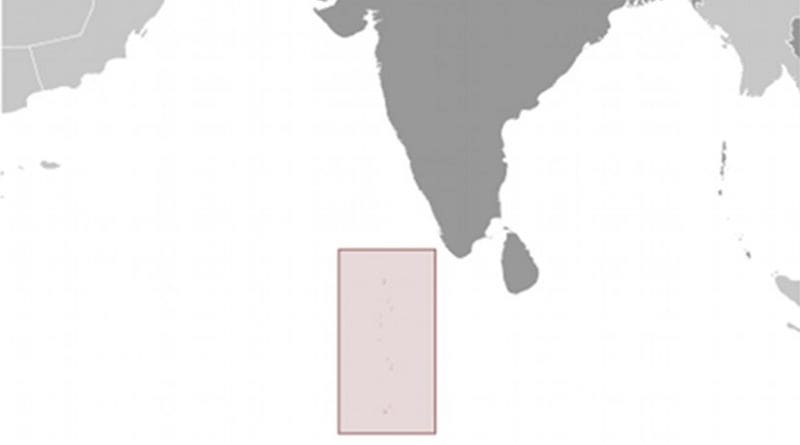Maldives: Indian Investments Vis-A-Vis Chinese Footprints – Analysis
By IPCS
By N Manoharan
India was once again caught unawares on 27 November 2012 when Maldives announced the termination of a US$511 million project with the Indian infrastructure company GMR Infrastructure Limited (GIL). On 24 June 2010, the GIL-MAHB (Malaysia Airports Holdings Berhad) consortium with 77 and 23 per cent stakes respectively won the contract to maintain and develop the Ibrahim Nasir International Airport. It was done through a global process of tenders conducted by the International Finance Corporation (IFC). Notably, it had became the single biggest FDI into Maldives, that too at the time of global economic recession. This project that got underway in November 2010 aimed at upgrading, maintaining and operating the existing Airport as well as build a new terminal by 2014. In the process, the aim was to increase the traffic from 2.6 million passengers per annum to over five million.
The Maldivian government under Mohamed Waheed has justified the termination on grounds that “there were many legal, technical and economic issues” which seems to be a lame excuse. If the reason was legal, Maldives would not have much problem in abiding by the Singapore High Court’s stay on the termination. If the reason was technical, the project would not have stayed alive successfully for two full years; even otherwise Waheed, who was the Vice President in Nasheed’s government, and later as President, had enough time to sort it out. If the reason was economic, Malé would have accepted GMR’s offer of waving the US$25 airport development fee for all Maldivians flying out of Maldives.
The island state indeed has every right to take calls on matters that suit its national interests. But, what has annoyed India most is the unprofessionalism displayed by Waheed’s regime on the issue and its disregard to abide by international agreements due to local political considerations. Surprisingly, even Indian Foreign Minister Salman Kurshid’s suggestion to iron out the differences between Malé and GMR through a neutral international expert was not considered by Maldives. Despite injunctive relief, Malé is adamant that its termination was “non-reversible and non-negotiable” and “no such injunction can be issued against a sovereign state.”
As one of the larger donors to Maldives, India is concerned that such thoughtless cancellations would hurt the interests of this atoll state in the long run. The move has already sent negative signals to prospective investors, especially Indian. When Waheed succeeded Nasheed, the first democratically elected president of Maldives, in a bloodless coup this February, New Delhi quickly reached out to him. It looks like the Indian gesture has become thankless now.
However, the fact that fringe groups like Adhaalath Party could dictate terms to the government of Maldives shows that President Waheed is not in control of things. What is more concerning are the anti-Indian sentiments shown by the groups that have been behind the termination of GMR contract. This got India worried on the safety of about 30,000 Indians working presently in Maldives and the state of Indian interests there.
Even more disconcerting is the favourable disposition of these anti-Indian groups towards China that has been desperately looking for a strong foothold in the Indian Ocean region. In a tweet, Adhaalath Party stated that “We would rather give the airport contract to our friends in China.” It further stated, “…the addition of Maldives as a friend [by China] would be a massive blow to future Indian power in this region.” Beijing has for long been building maritime and other linkages with the countries of eastern Africa, Southeast Asia, and South Asia to ensure the security of its sea lanes. These linkages have also doubled up as virtual encircling of India, which some call as the “String of Pearls” construct. Maldives is undoubtedly an important “pearl.” Sino-Maldives interactions have increased in the recent past to the extent of China opening an embassy in Male in 2011. Chinese are amongst the top visitors to Maldives of late. Beijing has evinced keen interest in developing infrastructure in Ihavandhoo, Marao and Maarandhoo Islands of the Maldives.
Perhaps, Maldives finds China much attractive now, but India’s long-term commitment and help in developing the island cannot be undermined. India’s Standby Credit Facility to Maldives runs into millions of dollars. Several state and private Indian institutions have been playing a vital role in the economic and cultural development of Maldives. Above all, it was India that saved Maldives from a mercenary attack in 1988 by promptly dispatching its armed forces (‘Operation Cactus’).
To bring Maldives around on the GMR issue, ideas like suspending economic aid are being floated in India. But, any such move would not work and in fact push Maldives further into Chinese hands. Any punitive measure would also help in strengthening the radical anti-Indian forces in the island. New Delhi should, of course, let Malé know sternly of its disappointments and the costs involved in the long run. At the same time, in the interest of Maldives and in the interest of India-Maldives ties and in the larger interest of regional peace and security, the issue needs to be dealt with a lot of patience. On its part, the Maldivian government, instead of outright rejection, should consider negotiating with GMR and flush out an amicable settlement. Narrow political considerations should not come in the way of bilateral relations and development of the island country.
N Manoharan
Vivekananda International Foundation
email: [email protected]

